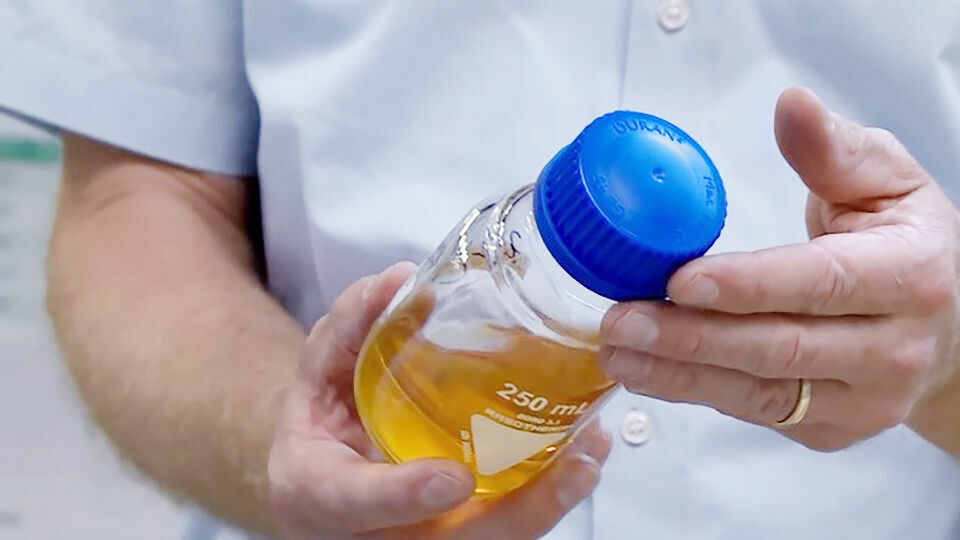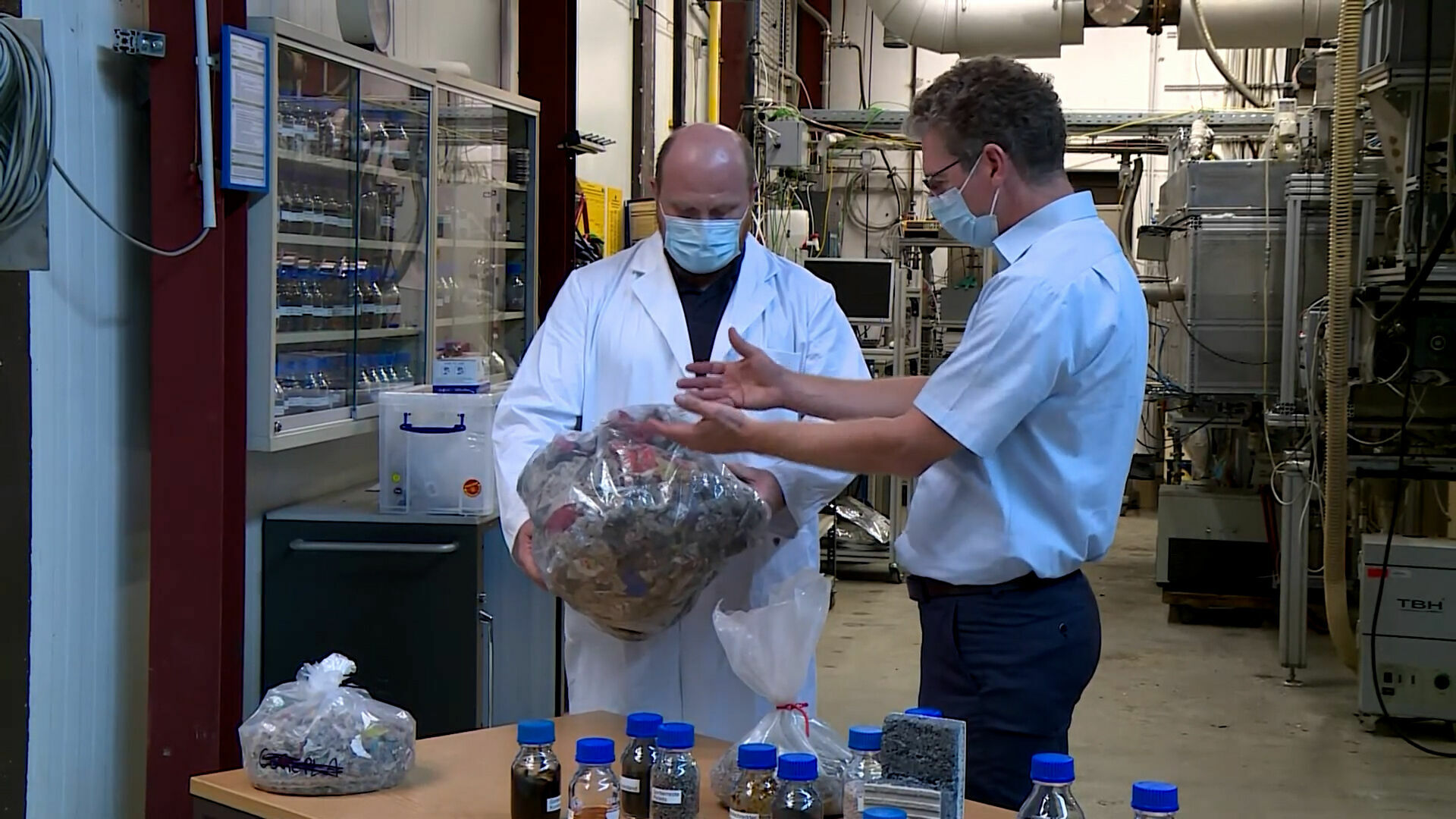Audi and KIT are working on recycling method for automotive plastics
- Pilot project launched: chemical recycling is to enable a closed loop for plastics from automotive engineering
- Repurposing: recycled plastics waste is processed into pyrolysis oil, which can subsequently be used for new components
- Marco Philippi, Senior Director Procurement Strategy: “We want to establish smart circular systems in our supply chains and make efficient use of resources”
A large number of components in automobiles are made from plastics. They have to meet exacting safety, heat resistance and quality requirements. That is why, so far, only petroleum-based materials have been suitable for manufacturing plastic components in automobiles that are subjected to particularly intensive wear. Such materials are not recyclable in most cases. Whereas plastics of the same type can often be mechanically recycled, recycling of mixed plastic waste poses a major challenge. Audi and the Karlsruhe Institute for Technology (KIT) are therefore launching a pilot project for chemical recycling as part of the “Industrial Resource Strategies” THINKTANK in order to feed such mixed plastic fractions back into a resource-conserving circular system.
A“We want to establish smart circular systems in our supply chains and make efficient use of resources,” says Marco Philippi, Senior Director Procurement Strategy. “Chemical recycling has great potential for this: If plastic components can be produced from pyrolysis oil instead of petroleum, it would be possible to significantly increase the proportion of sustainably manufactured components in automobiles. In the long run, this method can also play a role in end-of-life vehicle recycling.”
The “Chemical Recycling of Plastics in Automotive Engineering” pilot project targets the creation of smart circular systems for plastics and to establish this method as a complement to mechanical recycling and replacement of energetic recovery. Partnering with KIT, Audi intends to initially test the technical feasibility of chemical recycling and to evaluate the method in terms of its economy and environmental impacts. These evaluations are performed at KIT by teams led by ProfessorDieter Stapf (PhD) at the Institute for Technical Chemistry (ITC) and Dr. Rebekka Volk at the Institute for Industrial Production (IIP). For this purpose, the company provides plastic components that are no longer needed, such as fuel tanks, wheel trim parts and radiator grills, from Audi models returning from the German dealership network, for example. These plastic components are processed into pyrolysis oil by chemical recycling. The quality of this oil corresponds to that of petroleum products, and materials made from it are equally high-grade as new ones. In the medium run, components made from pyrolysis oil can be used again in automobiles.
So far, chemical recycling has been the only method that can be used to convert such mixed plastic waste into products equaling the quality of new ones. As a result, a wider range of plastics can be recovered. Such closed material loops have several advantages. They conserve valuable resources because less primary material is required. This, in turn, saves energy and costs – and is beneficial to the environment. Audi is one of the first automobile manufacturers to test this recycling method in a pilot project with plastics from automobile production. “Recycling automotive plastics has not been possible for many components so far. That is why we are doing pioneering work here together with Audi,” says Professor Dieter Stapf, Head of the Institute for Technical Chemistry at KIT. “If we want to close these loops, we need to develop suitable methods for this.”
This project is conducted by the THINKTANK Industrial Resource Strategies which the Baden-Württemberg state government, together with industry and supported by academia, has established at KIT. “The THINKTANK is focused on a holistic view of raw material loops. Chemical recycling can be a major component of comprehensive plastics recycling. This makes it such an interesting proposition for the automotive industry. The THINKTANK and Audi are jointly addressing a central issue of making automobiles more sustainable and environmentally friendly irrespective of their type of powertrain, going forward,” says Dr. Christian Kühne, the Managing Director of the THINKTANK.
Audi has identified chemical recycling as an opportunity together with its suppliers as part of CO2 workshops. The objective of Audi’s CO2 program is to use resources as efficiently as possible and to reduce CO2 emissions in the upstream value chain, clearly focusing on materials that are either required in large quantities or entail particularly energy-intensive manufacturing processes. A successful case in point is the Aluminium Closed Loop with which Audi and its suppliers managed to recover aluminum waste and improve it to new-product quality level, thus avoiding some 150,000 metric tons of CO2 on the environmental balance sheet just in 2019.
The company is planning to gradually increase the proportion of secondary materials in its models. The most recent example is the utilization of PET in the Audi A3. PET is a plastic polymer that can be separated from other materials with which it may have been combined and is therefore easier to recycle. For the Audi A3, for instance, three textile seat covers are available with a recycled material content of up to 89 percent. At the moment, the seat covers are not completely made of recyclable materials. “The challenge is the lower fabric, which is connected to the upper material with an adhesive. We are working on replacing this too with recyclable polyester,” says Ute Grönheim, who is responsible for textile materials development at Audi. “Our goal is to manufacture the seat cover completely from the same type of material so that it can be recycled. We’re not far from achieving this goal.” Going forward, all textile seat covers are supposed to be made of recycled materials across all model ranges. If its technical feasibility can be demonstrated, Audi plans to industrialize the technology and then progressively apply it to more and more components.


